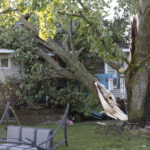The typical CGL policy provides coverage for damage resulting from an “occurrence,” but includes a number of exclusions which limit coverage for an insured’s own work. Exceptions are provided, however, when their work causes damage to other property, or, in the case of the general contractor, when the work was performed by subcontractors and has been completed.
In a number of recent opinions, Texas state and federal courts have struggled with the issue of when a contractor’s failure to perform properly constitutes an occurrence, and when it is simply a breach of contract. In Federated Mut. Ins. Co. v. Grapevine Excavation, Inc., 197 F.3d 720 (5th Cir. 1999), the Fifth Circuit concluded that even allegations of breach of contract could be covered, if the damage resulted from an “occurrence” under the policy.
In Grapevine Excavation, the insured had performed excavation, backfilling, and compacting work in connection with construction of a parking lot. The fill materials did not meet specifications, resulting in damage to the lot. The trial court originally found that the insurer had no duty to defend the subcontractor for faulty performance, as there was no “occurrence.” The Fifth Circuit reversed, finding that negligent acts of the insured caused damages that were unintended and unexpected, and therefore an “occurrence” was stated. Notably, the insured’s work did not include the entire parking lot, and portions of the parking lot had to be replaced to access and repair the insured’s work. The court reasoned, in part, that damage “wreaked on the work product of a third party” is presumed to be unexpected.
The Northern District followed suit in E&R Rubalcava Constr., Inc. v. The Burlington Ins. Co., No. 3:99-CV-0073-M (N.D. Tex. 2000). In Rubalcava, the underlying lawsuit arose from claims by home purchasers against the general contractor for defects, including faulty foundations. The contractor in turn sued Rubalcava, who had constructed the foundations, asserting breach of contract and contractual indemnity. The court addressed defense, and not indemnity, but held that at least some of the claims potentially fell within the scope of coverage, and triggered a duty of defense. The court reasoned, in part, that while Rubalcava was liable under contract, Rubalcava would also be liable under a negligence theory. The court, citing Grapevine, stated “an obligor who intends his performance to be correct but he negligently falls short of the appropriate standard and causes unintentional damages is a negligent tortfeasor whose conduct constitutes an accidental occurrence under the policy.”
While the court briefly addressed the “business risk” exclusions, it again noted that the damages alleged included not only the cost to repair the foundation itself, but the cost to repair other damage to the homes.
Similarly, in First Texas Homes, Inc. v. Mid-Continent Casualty Co., No. 3-00-CV-1048-BD (N.D. Tex. 2001), the court concluded that allegations that a home was poorly designed and built, because the foundation was insufficient, stated an “occurrence.” The court also found the exclusions did not apply, because the work was performed by a subcontractor.
Based upon these cases, a contractor would be justified in concluding he obtained fairly broad coverage under a CGL policy. While replacement of the contractor’s own work would not be covered, any other resulting damage would likely fall within coverage. Further, whether a contractor is sued under theories of negligence, breach of contract, or indemnity, any unexpected or unintended damage would trigger a duty of defense and, in all likelihood, indemnity.
Taking a different tack, several state courts have reached conclusions which throw this reasoning into question. In Hartrick v. Great American Lloyds Ins. Co., No. 01-99-00215-CV (Tex. App.—Houston [1st Dist.], Aug. 17, 2000), the court concluded that no coverage existed for a suit against a builder under theories of breach of implied warranties of good and workmanlike construction and suitability for habitation. The court concluded that the allegations of defective construction work did not constitute an “occurrence” under the policy. Hartrick also involved, in part, alleged defects in the foundation of the home. The damages included the cost to repair the foundation, and alleged diminution in the home’s value, even if the defects were repaired.
In regard to the foundation, plaintiffs alleged that the contractor had not properly prepared the soil, that the foundation was of inadequate strength, insufficiently thick, and did not have the proper supporting piers.
The court held that the problems with the foundation resulted from voluntary and intentional conduct, and that the results were therefore expected and intended. In direct contrast to Grapevine Excavation, where the court found that failure to provide gravel of the size required by the specifications could still result in unintended damage, the court in Hartrick found the resulting pitching and heaving was the expected result of the failure to properly prepare the soil and construct the foundation as promised.
Explaining its reasoning, the court noted, in part, that “this Court and others have recognized the general rule that a broad form CGL policy does not insure a contractor because his workmanship was faulty, it does provide coverage for damages that result from the contractor’s performance, other than damages to the building itself.” Accordingly, the court concluded there was no “accident” and thus no occurrence.
Hartrick did not focus on the exclusions and did not even address whether subcontractors’ work caused damage to other property. Instead, the court concluded that its result was consistent with the “well settled prohibition against affording coverage . . . for damages to a building that result from the insured’s defective workmanship on the building.” On May 3, 2001, the Austin Court of Appeals followed Hartrick in Devoe v. Great American Ins., No. 03-00-00695-CV (Tex. App.—Austin, May 3, 2001). In the underlying suit, the homeowners sued the general contractor, alleging flaws in the construction of their home, including improper and deficient workmanship and failure to complete the home on time. On default judgment, the homeowners recovered under theories of breach of contract, and violations of the Deceptive Trade Practices Act.
The insurer denied coverage, relying on the argument that there was no “occurrence,” as well as the exclusions pertaining to the insured’s own work. Applying the “complaint allegation” rule, comparing the allegations to the policy’s terms, the court held that the insurer was not required to defend the insured. The court recognized that the petition need not specifically allege an “accident,” but concluded that the allegations did not give rise to even the possibility of an accident.
The court held that mere allegations of “shoddy workmanship” did not constitute an accident or “occurrence.” Going even further than Hartrick, the court held that, even if the resulting, poorly constructed home was unexpected or unintended, the home was constructed as a voluntary and intentional act, and therefore there was no “occurrence.”
Besides emphasizing the difference in viewpoint of the state and federal courts, these recent cases demonstrate a renewed focus on the acts of the contractor, rather than the resulting damage. The cases may also indicate a renewed focus on whether damage is “expected” rather than whether it is intended.
To the contractor, these cases may create a serious concern about the scope of coverage. For general contractors, who rely on their subcontractors’ insurance for protection, these decisions may indicate a need to emphasize the use of quality subcontractors, and to look at other forms of shifting risk and guaranteeing performance.
If Hartrick and Devoe are the new wave, contractors should expect that damage predictably resulting from a failure to follow specifications or use proper quality materials may not be covered. Unforeseeable damage, to other than the insured’s work, should still constitute an “occurrence” and fall within coverage. The application of the work product/business risk exclusions, however, may become of secondary importance if the damage is the expected result of failure to follow specifications or industry practice.
Bradley is a partner in the Dallas office of Thompson, Coe, Cousins & Irons, L.L.P. She is a member of the Insurance Litigation and Coverage Section and leads the firm’s coverage practice. She has represented agents in disputes with policyholders and insurers and routinely represents insurers in evaluating and litigating coverage issues under general and professional liability policies, commercial auto and trucking policies, commercial property policies and homeowner’s policies.
Topics Lawsuits Construction Contractors
Was this article valuable?
Here are more articles you may enjoy.


 Acrisure CEO Greg Williams Makes $400M Commitment to Michigan State University
Acrisure CEO Greg Williams Makes $400M Commitment to Michigan State University  Brookfield Targets Global Dominance in P/C Insurance Coverage
Brookfield Targets Global Dominance in P/C Insurance Coverage  One of Highest Property Claims Severity Recorded in Q3 on Low Volume, Says Verisk
One of Highest Property Claims Severity Recorded in Q3 on Low Volume, Says Verisk  Owner of Historic Minnesota Resort Charged With Arson, Insurance Fraud
Owner of Historic Minnesota Resort Charged With Arson, Insurance Fraud 


